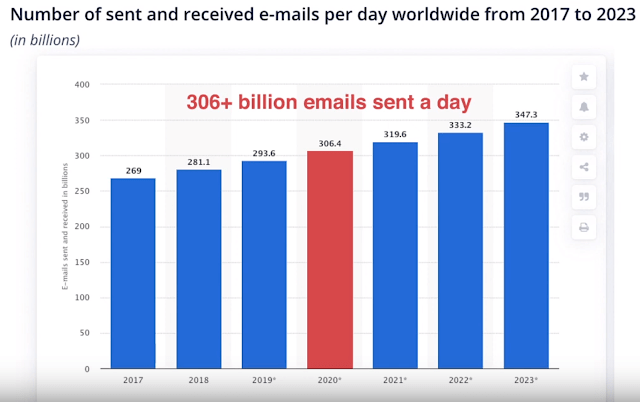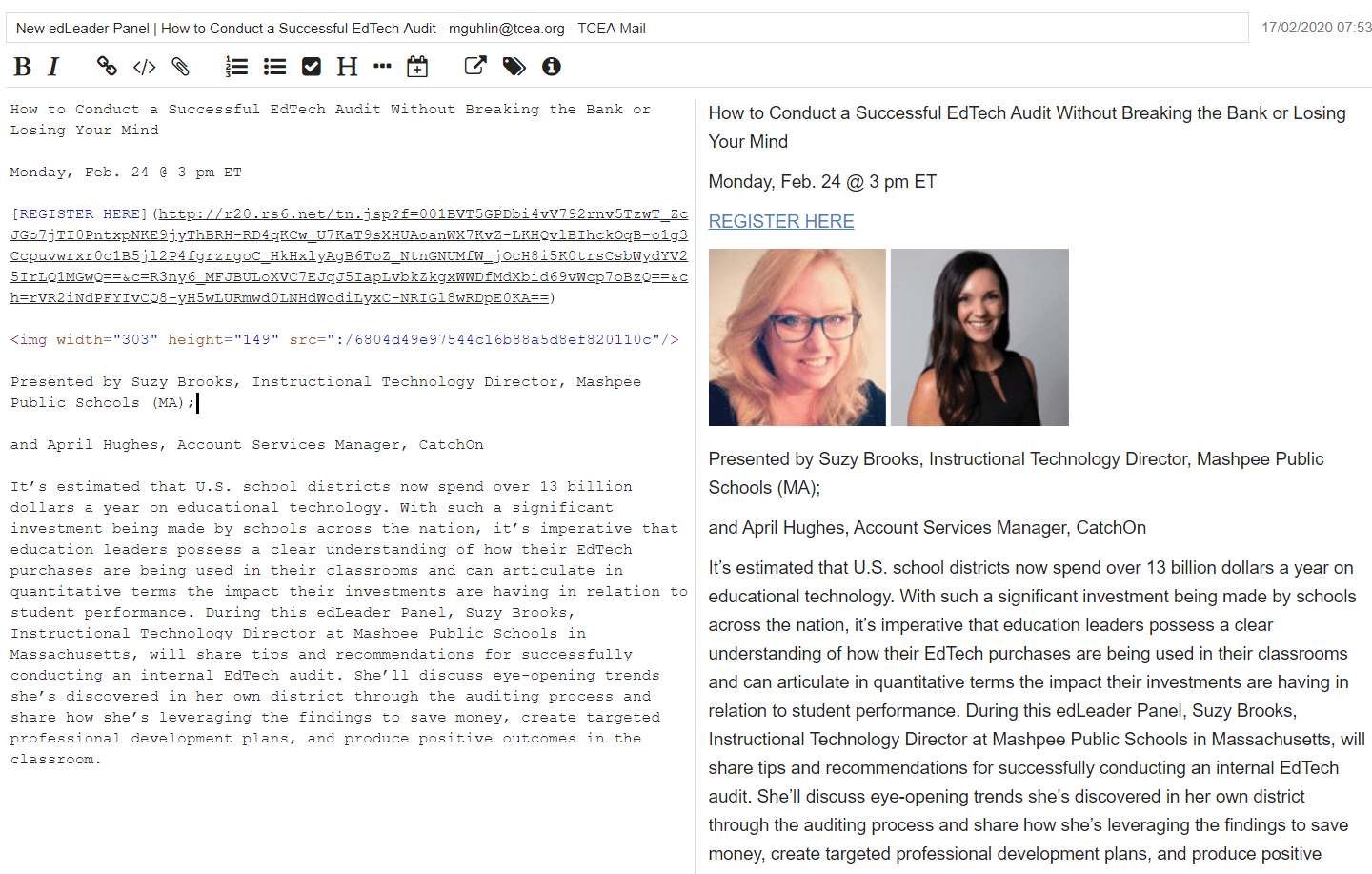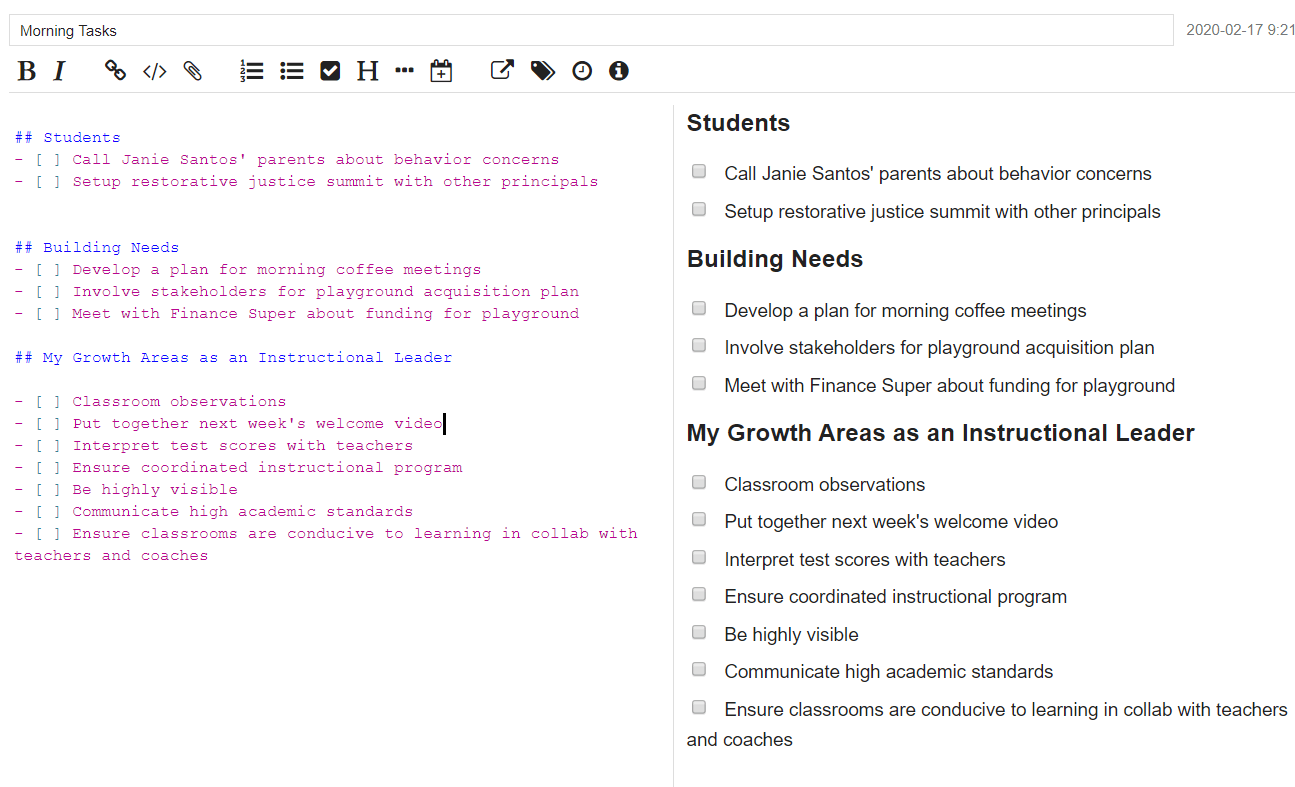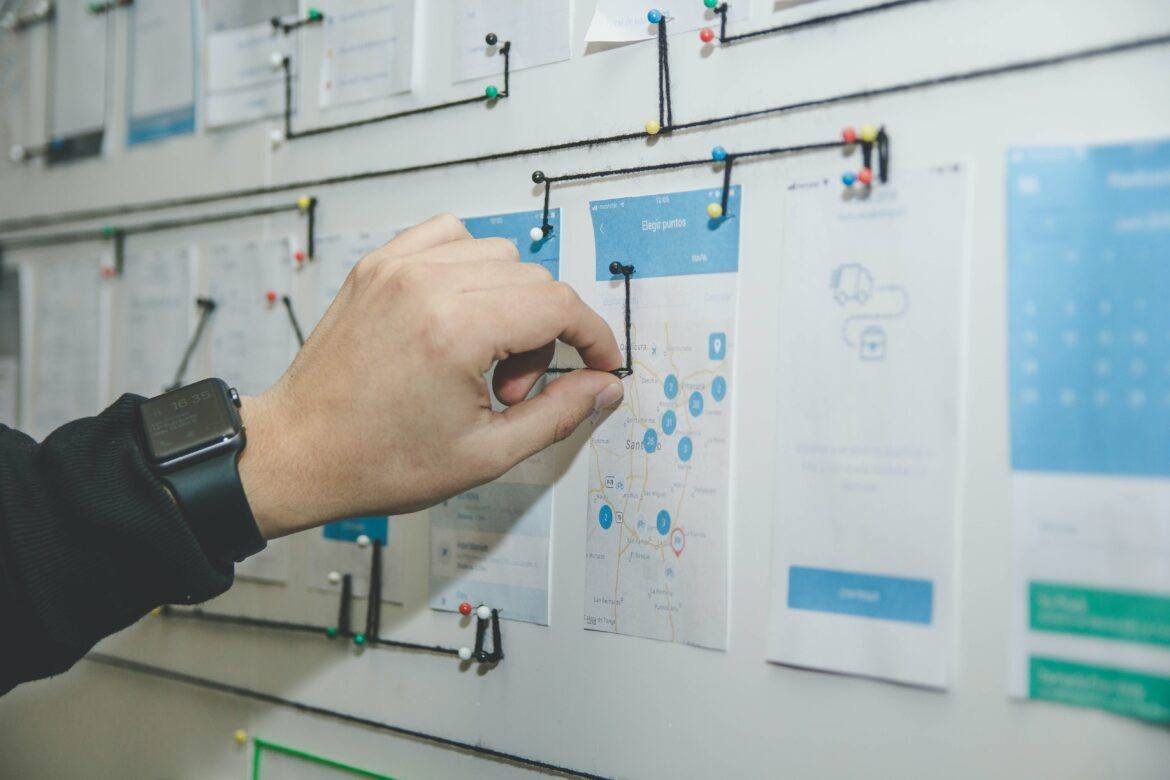Many administrators I know spend their time between two devices. The devices include their Windows 10 computer and their smartphone, usually an iPhone. If you’re using a Windows 10 or Mac computer, then you may be unaware of a powerful, free tool that can help you stay organized. In this blog entry, we’ll explore a few tips that take advantage of Joplin to organize your email, critical documents, contacts, to-do lists, and more.
Safeguarding Data
Before we go any further, let’s take a moment to explore why we would use a free, open source note-taking and to-do tool. As administrators, we often deal with sensitive data that requires encryption. Wouldn’t it be neat to have a tool that featured end to end encryption? That way, it doesn’t matter if someone did get access to your smartphone, iPad, or laptop/desktop device. The data would safeguarded.
The tool we’ll be using is the free, open source tool, Joplin. It saves data in encrypted format in your cloud storage solution, such as Dropbox. If you have used Evernote, then you’re familiar with how Joplin works. The only caveat is that you cannot access Joplin data via a Chromebook or web browser. You CAN save information from the web (such as articles, blog entries, pictures) to Joplin.
Let’s explore a few ways Joplin can make your life simpler. In the last tip, we’ll discuss encryption.

Source: CloudHQ: Video
Tip #1 – Organize Your Email
“I get hundreds of email per day. Most are throw-aways, but a few I need to refer to time and again. They are process and procedures of how we do things. I try saving them in Google, but they get lost.” One way to overcome email challenges like this is to create a notebook in Joplin. Use that notebook to house critical messages, processes, and procedures.
Use the Joplin Web Clipper to copy critical content from your G Suite EDU inbox to Joplin. The Web Clipper is a browser extension that allows you to save web pages and screenshots from your browser.
For example, I received this email about conducting technology audits. Since it’s a webinar I would like to attend, I saved the message (which arrived via Gmail) to Joplin. You can see the original message below, followed by how it looks in Joplin:
From My Email Inbox:

What It Looks Like in Joplin:

One of the main benefits is that I now have a Markdown-formatted, easy-to-edit version on my device. This is a great way to pull content from the web and remix it. Once this content is in my Joplin notebook, I’m able to move it around and put it in any notebook I want via click-n-drag.
Did You Know?
Sign up for one of our Google Certified Educator certifications. You’ll learn about more than Google Meet, as well as earn 12 CPE hours per course. Use these courses to get Google Educator certified. Find out more online.
Tip #2 – Save Digital Documents
Tools like Google Drive and Microsoft OneDrive make saving scanned documents easy. While both house your data, the data is not encrypted at rest. That means that anyone who gains access to your account can see them. This can happen via a phishing attack or cloud storage hack.
The questions I often get from security-savvy administrators is, “Is it encrypted? Is it safe?” They are leery of trusting anything to cloud storage without encryption. Joplin can be their perfect assistant. It offers end-to-end encryption, protecting data while in transit from your device to the cloud. It also encrypts that data while at rest. This means that, even if someone gets access, they will not be able to read or view the contents of your notes.
Pictures you save to your Joplin notebook feature encryption. Of course, once you save a picture into Joplin, make sure to remove it from your smartphone’s photo gallery.
Tip #3 – Check That Off Your List!
“What I like to do every morning is make a checklist of what I need to do each day.” She held up her phone and waved it in front of me with a smile. “If I run into new items, I add them to my digital checklist and keep going!”

A lot of us have “To-Do” lists, but it’s so easy to see them as a list of items that never gets worked through. While many are using Microsoft To Do (which got a workover from Wunderlist folks) and Google Keep. others may not want a collaborative tool. One of the challenges of relying on a cloud to-do manager is that it may not sync up in low bandwidth environments. As such, you can rely on Joplin because it keeps a copy of all your to do lists and notes on each device you have.
Tip #4 – Track Your Troubles
“The ceiling is dripping right into this computer lab,” pointed out a colleague. I opened up a note in the Joplin notebook I had setup for the campus and snapped a picture. I added the the classroom number and now I had a visual record of a building problem. Later, when I got back to my office, I could write an email and attach the evidence.
Use the Joplin app as a trouble-tracker and documentation tool. School administrators run into problems daily. Snap a picture of the problem into a Joplin note to keep a record of it.
Tip #5 – Manage Your Meetings with Joplin
Stuck attending an endless parade of meetings? In most meetings, we write notes that won’t make sense to others. With a keyboard, I am able to take detailed notes. I can also snap pictures of meeting materials. This could be business cards, meeting agendas, and handouts. This makes organizing so much easier. Even if you take notes on paper, you can later snap a picture and drop it into your meeting notebook on Joplin.
I’ve tried all sorts of digital note-taking tools and digital styluses, and I keep coming back to the old tools. Those tools? Pad-and-pen or a keyboard, then save it all into a Joplin note.
You can also track vendor interactions. Any campus or district administrator knows that vendors are going to come calling. Depending on how I set up my notebooks in Joplin, I can organize by project and match vendors to the job. This makes it easier later.
A Note About Encryption Before We Finish Up
Protecting your private data, including notes about work, can be a real money saver. When you encrypt data at rest, you ensure that others cannot access sensitive data. What’s more, it’s protected under the Texas Safe Harbor law.
That means that what’s encrypted doesn’t have to be reported as lost or stolen. That’s a money saver because it means you don’t have to pay for identity protection for affected parties. Joplin encrypts data stored in your digital notebooks and cloud storage (e.g. Dropbox). I hope you’ll take advantage of encryption (but don’t lose the password).
What else could you save in Joplin’s Notebook app? A few more I can think of include travel receipts, critical notes, and more. Take a moment to explore Joplin and see if it works for you. Remember, if you don’t have any security concerns, then Google Keep may work well for you. If you need a full-featured text editor, then Microsoft OneNote may meet your needs. It’s a question of what you need the most. Since I am a minimalist, Joplin works well for me. Find out if it will for you.


2 comments
I enjoyed your article. I have been trying to force myself to switch over to Joplin completely. I got used to OneNote at my last job and liked it, but I like the more minimalist approach of Joplin. I also have a pretty extensive Google Keep set up, but I suppose I could just start working through those one tag at a time.
By the way, I believe you can use Joplin on a chromebook by using the Android app.
Excellent point, Michael. Yes, you can run Joplin via Android on a Chromebook. I like Joplin’s simplicity. I often pair StackEdit.io with it’s built-in markdown/HTML support with Joplin, taking quick notes in StackEdit.io then copy-n-pasting them into Joplin for long-term storage.
OneNote, as full-featured and wonderful as it is, reminds me of a juggernaut…and I’d rather rely on open source tools over the long-run.